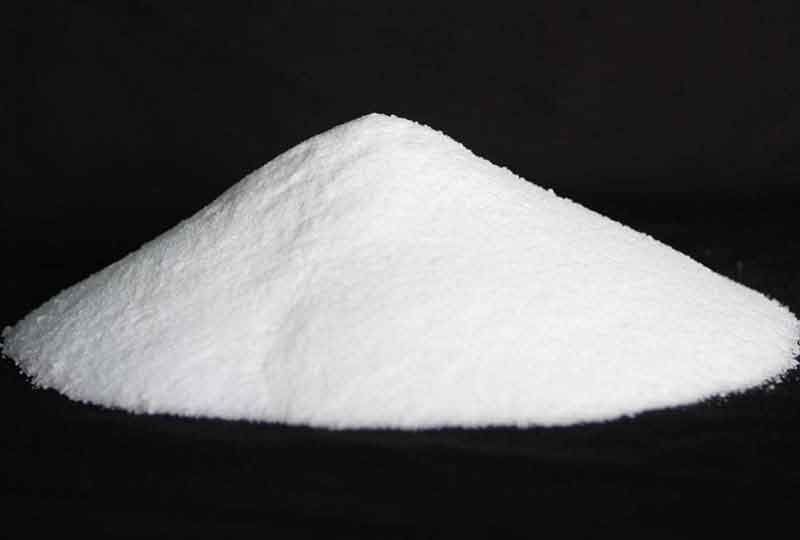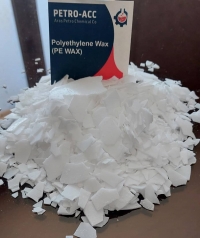Project Description
Micronized PE Wax is a type of wax that has been finely ground or pulverized into very small particles, typically with an average particle size in the micrometer (μm) range. Polyethylene wax is derived from polyethylene, a polymer commonly used in various applications due to its versatile properties.
The micronization process involves reducing the size of the wax particles through mechanical grinding or milling. This results in wax with increased surface area and improved dispersibility in various materials. The smaller particle size of micronized PE wax offers several benefits in different industries and applications
| Name | Micronized Polyethylene Wax |
| Manufacturer | ARAS PETROCHEMICAL |
| Made By | PETRO-ACC |
| Product Code | PE310 |
MICRONIZED PE WAX FEATURES
Here are some features and characteristics of micronized polyethylene wax:
Particle Size Distribution: Micronized polyethylene wax has a controlled and consistent particle size distribution, typically ranging from a few microns to several tens of microns. This fine particle size allows for better dispersion and incorporation into various systems.
Improved Processability: The small particle size of micronized polyethylene wax contributes to improved processability and ease of handling. It can be easily mixed, dispersed, and incorporated into different formulations, such as coatings, inks, adhesives, plastics, and more.
Enhanced Surface Properties: When added to formulations, micronized polyethylene wax can modify the surface properties of the end product. It imparts properties such as slip, abrasion resistance, scratch resistance, matting, and texture improvement.
Scratch and Mar Resistance: Micronized polyethylene wax is known for its ability to enhance the scratch and mar resistance of coatings, paints, and other surfaces. It forms a protective layer that helps prevent damage from everyday wear and tear.
Matting Effect: In coatings and paints, micronized polyethylene wax can provide a matting effect by reducing the glossiness of the surface. This is particularly useful for achieving desired levels of sheen or gloss in various applications.
Improved Rheological Properties: The addition of micronized polyethylene wax to formulations can influence the rheological properties, such as viscosity and thixotropy, of the material. This can lead to better application characteristics and performance.
Anti-Blocking and Release Properties: Micronized polyethylene wax is often used as an anti-blocking agent in plastics and films. It reduces the tendency of materials to stick together and improves the release properties of films and sheets.
Compatibility: Micronized polyethylene wax is compatible with a wide range of polymers, resins, and other materials. This versatility makes it suitable for various applications across different industries.
UV Stability: Micronized polyethylene wax can provide UV stability and resistance to certain formulations, making it valuable for applications that are exposed to sunlight or outdoor conditions.
Reduced Coefficient of Friction: The addition of micronized polyethylene wax can reduce the coefficient of friction in materials, making them more lubricious and reducing wear and tear.
Thermal Stability: Micronized polyethylene wax can offer thermal stability to materials, helping them maintain their integrity and performance at elevated temperatures.
Micronized PE Wax Applications
The smaller particle size enhances its performance in different applications. Here are some common applications of micronized polyethylene wax:
Coatings and Inks: Micronized polyethylene wax is often used in coatings and inks to improve surface properties such as scratch resistance, abrasion resistance, and matting. It can also act as a dispersing agent for pigments and other additives, leading to improved stability and consistency in formulations.
Plastics and Masterbatches: In the plastics industry, micronized polyethylene wax is used as a processing aid and lubricant. It can enhance the flow properties of plastic materials during extrusion and injection molding, reduce friction, prevent sticking, and improve demolding.
Rubber Processing: Micronized polyethylene wax can be added to rubber compounds to improve the processing and surface characteristics of rubber products. It helps in reducing the sticking of rubber to molds and processing equipment.
Adhesives: In adhesive formulations, micronized polyethylene wax can act as a rheology modifier, enhancing the viscosity and stability of the adhesive. It can also improve adhesion properties and reduce blocking (sticking) between adhesive layers.
Candles: Micronized polyethylene wax is commonly used in candle manufacturing to improve the hardness and gloss of the candle surface. It can also aid in the release of candles from molds and improve burn properties.
Personal Care Products: Micronized polyethylene wax can be found in various personal care products such as creams, lotions, and lip balms. It is used to improve the texture, spreadability, and gloss of these products.
Textiles and Nonwovens: In textile and nonwoven industries, micronized polyethylene wax can be added to formulations for sizing agents and finishes. It enhances fabric softness, smoothness, and water repellency.
Powder Coatings: In powder coating formulations, micronized polyethylene wax can act as a matting agent, improving the surface texture and appearance of coated materials.
Construction Materials: Micronized polyethylene wax can be incorporated into construction materials such as paints, plaster, and concrete to enhance water resistance, durability, and workability.
Lubricants and Greases: Micronized polyethylene wax is used as an additive in lubricants and greases to improve their lubricity and reduce friction, thereby extending the lifespan of machinery and equipment.
Release Agents: In various industries, including mold release applications in plastics and rubber processing, micronized polyethylene wax is used as a release agent to prevent materials from sticking to molds or other surfaces.
Micronized PE Wax Formulation
A formulation involving micronized PE wax would depend on the specific application and desired properties. Here’s a general outline of how you might approach formulating with micronized PE wax:
Ingredients:
Base Material: This could be a polymer resin for plastics, a binder for coatings, or a similar material depending on the application.
Micronized PE Wax: The main additive that will provide specific properties to the formulation.
Other Additives: Depending on the desired characteristics, you might include other additives such as stabilizers, pigments, fillers, dispersants, etc.
Formulation Steps:
Determine the Application: Understand what you want to achieve with your formulation. Are you trying to improve scratch resistance in a coating? Enhance the flow of a plastic compound? The application will dictate the properties you want the micronized polyethylene wax to impart.
Select Base Material: Choose the appropriate base material for your application. This could be a polymer for plastics or a binder for coatings. The compatibility between the base material and the wax is crucial for achieving desired results.
Determine Wax Concentration: The concentration of micronized polyethylene wax can vary based on the desired effect. It’s usually added in relatively low percentages (often less than 10% by weight) to avoid negative effects on the mechanical properties of the base material.
Mixing: Depending on the formulation and the materials involved, the wax can be mixed into the base material using various methods, such as melt blending, solution mixing, or dispersion techniques.
Processing: Process the mixture using appropriate methods. For plastics, this might involve extrusion or injection molding, while coatings could involve methods like spray coating or roller coating.
Testing and Adjusting: Test the formulated product for the desired properties. If needed, adjust the wax concentration or other formulation parameters to achieve the desired results.
Quality Control: Ensure consistency in your formulation by implementing quality control measures.
Micronized PE Wax Packing
Packing would be 20 kg polypropylene bags with pallets and shrink.
Container capacity would be as below:
20ft & 40ft containers for sea shipment:
20ft FCL: 13 MT/20 kg bags with pallets
40ft FCL: 25 MT/20 kg bags with pallets
The capacity of a Full truck: 25 MT
Micronized PE Wax Storage
Proper storage of micronized PE wax is essential to maintain its quality and prevent degradation. Here are some guidelines for storing micronized PE wax:
Temperature: Store the micronized polyethylene wax in a cool, dry place, away from direct sunlight and heat sources. Elevated temperatures can cause the wax to melt or soften, leading to clumping and reduced flow properties.
Humidity: Keep the storage area dry. High humidity can cause the micronized PE wax particles to agglomerate and lose their free-flowing nature.
Containers: Store the micronized polyethylene wax in its original packaging or in suitable containers that are tightly sealed to prevent moisture absorption and contamination. Plastic or metal containers with airtight lids are commonly used for this purpose.
Separation: Over time, micronized polyethylene wax particles can settle and separate. To prevent this, gently stir or agitate the stored wax at regular intervals, especially if it has been sitting unused for an extended period.
Stacking: If you need to stack containers of micronized polyethylene wax, ensure that they are stable and that the weight of the containers above doesn’t cause deformation or damage to the lower containers.
Labeling: Clearly label the containers with the product name, lot number, manufacturing date, and any other relevant information. This helps with proper inventory management and ensures that you are using the oldest stock first (following the first-in, first-out principle).
Handling: When handling the micronized polyethylene wax, use appropriate protective equipment like gloves and dust masks to prevent skin contact and inhalation of fine particles.
Avoid Contaminants: Keep the storage area free from contaminants such as dust, dirt, solvents, and other foreign materials that could affect the quality of the micronized polyethylene wax.
Fire Safety: Micronized polyethylene wax is flammable, so store it away from open flames, sparks, and potential ignition sources.
Inventory Management: Regularly assess your inventory of micronized polyethylene wax and rotate stock as needed to ensure that older material is used before newer batches.
MICRONIZED PE WAX SPECIFICATION
| PROPERTIES | Result | Unit | Method |
| Color | White | Visual | – |
| Appearance | Powder | Visual | – |
| Solubility in water | unsolvable | – | – |
| Viscosity | 10-40 | CPS | ASTM D3236 @ 149 °c |
| Melting Point | 95-115 | ℃ | ASTM D 2117 |
| Density | 0.90 – 0.94 | gr/cm3 | ISO 1183-2 |
| Volatility | Max 2.0 | % | – |




